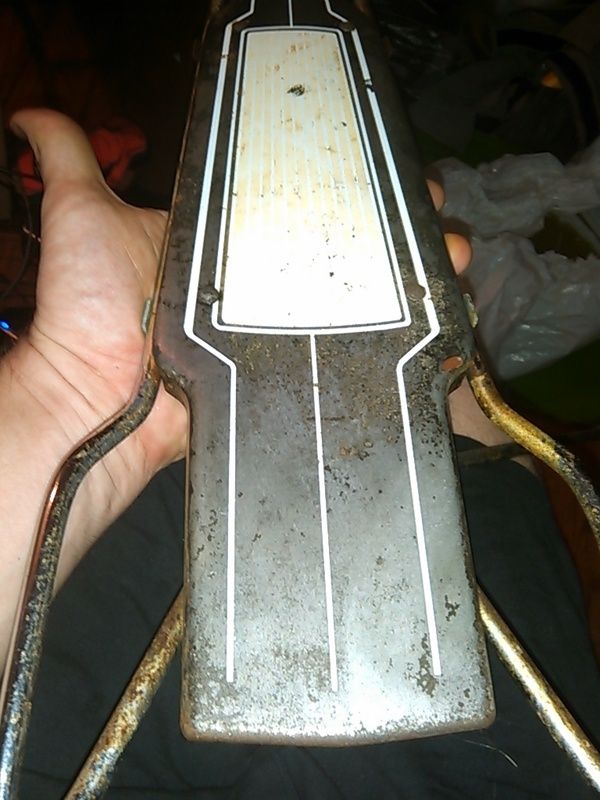- Joined
- Jun 18, 2013
- Messages
- 68
- Reaction score
- 67
After reading the countless good reviews and having this stuff recommended to me, I decided to buy some because the rear rack on my Cosmic Flyer had a few tiny specs of rust in the paint. The paint was near perfect but I decided not to hand polish it out because I didn't want to wear away any of the original water decals.
This was my favorite bike and the design on the rear rack was my favorite feature of the bike. Well, I soaked it and checked it every 30 minutes to be sure it wasn't hurting the paint.
After a couple hours I didn't see the rust spots anymore so I proceeded to rinse it in cold water.
To my horror, all the color in the decals and all the original paint just started washing off the rack to bare metal.
To me, this ruined the bike. I could repaint and duplicate this pattern to some extent, but the appeal of this bike was how original and well kept it was. I'm absolutely sickened that I trusted this stuff to be "paint safe".
Just a warning, I'm sure it's okay on chrome, but don't gamble your delicate painted parts with this stuff!!!

This was my favorite bike and the design on the rear rack was my favorite feature of the bike. Well, I soaked it and checked it every 30 minutes to be sure it wasn't hurting the paint.
After a couple hours I didn't see the rust spots anymore so I proceeded to rinse it in cold water.
To my horror, all the color in the decals and all the original paint just started washing off the rack to bare metal.
To me, this ruined the bike. I could repaint and duplicate this pattern to some extent, but the appeal of this bike was how original and well kept it was. I'm absolutely sickened that I trusted this stuff to be "paint safe".
Just a warning, I'm sure it's okay on chrome, but don't gamble your delicate painted parts with this stuff!!!

Last edited:




